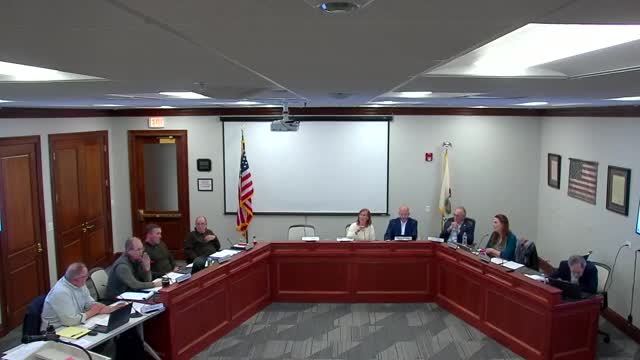Zoning Board Debates Animal Limits Amid Controversy
November 17, 2024 | Campton Hills, Kane County, Illinois
This article was created by AI summarizing key points discussed. AI makes mistakes, so for full details and context, please refer to the video of the full meeting. Please report any errors so we can fix them. Report an error »

During a recent government meeting, trustees engaged in a heated discussion regarding proposed zoning regulations for the keeping of animals, particularly focusing on the need for numerical limits. The conversation highlighted differing opinions on whether to establish a specific cap on the number of animals permitted per lot, with some trustees advocating for a limit while others argued that existing regulations already impose restrictions based on lot size and setbacks.
Trustee Jim expressed support for a numerical limit, referencing a previous ordinance from 2023 that he believed was effective. He emphasized the importance of having a clear guideline to alleviate concerns from residents about potential overpopulation of animals in residential areas. However, other trustees pointed out that the current proposal does not include a straightforward numerical limit, instead relying on the physical constraints of individual properties to dictate how many animals can be kept.
The discussion also touched on the need for clarity in the proposed ordinance, with Trustee Mike suggesting that while a specific number may not be necessary, a framework illustrating how to calculate permissible animals based on lot size and type could be beneficial. This would help residents understand the limitations without creating confusion or fear about unrestricted animal keeping.
As the debate continued, tensions rose, prompting calls for a more collaborative approach. Trustee Tom proposed postponing the decision until the next meeting to allow for further discussion and to ensure all trustees could contribute to the conversation. This suggestion was met with general agreement, highlighting a desire for unity and consensus on the matter.
The trustees ultimately decided to defer the discussion on animal regulations until the following week, aiming to reach a clearer understanding and potentially modify the proposed ordinance to better address community concerns. The meeting underscored the complexities involved in balancing animal husbandry with residential zoning, reflecting the ongoing efforts of local government to navigate these issues thoughtfully.
Trustee Jim expressed support for a numerical limit, referencing a previous ordinance from 2023 that he believed was effective. He emphasized the importance of having a clear guideline to alleviate concerns from residents about potential overpopulation of animals in residential areas. However, other trustees pointed out that the current proposal does not include a straightforward numerical limit, instead relying on the physical constraints of individual properties to dictate how many animals can be kept.
The discussion also touched on the need for clarity in the proposed ordinance, with Trustee Mike suggesting that while a specific number may not be necessary, a framework illustrating how to calculate permissible animals based on lot size and type could be beneficial. This would help residents understand the limitations without creating confusion or fear about unrestricted animal keeping.
As the debate continued, tensions rose, prompting calls for a more collaborative approach. Trustee Tom proposed postponing the decision until the next meeting to allow for further discussion and to ensure all trustees could contribute to the conversation. This suggestion was met with general agreement, highlighting a desire for unity and consensus on the matter.
The trustees ultimately decided to defer the discussion on animal regulations until the following week, aiming to reach a clearer understanding and potentially modify the proposed ordinance to better address community concerns. The meeting underscored the complexities involved in balancing animal husbandry with residential zoning, reflecting the ongoing efforts of local government to navigate these issues thoughtfully.
View full meeting
This article is based on a recent meeting—watch the full video and explore the complete transcript for deeper insights into the discussion.
View full meeting
